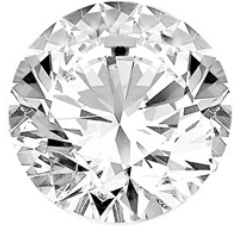The 4C’s of Diamonds
 Every diamond is unique and they come in a variety of sizes, shapes, colors and with differing internal characteristics. Diamond professionals use a grading system, the 4Cs, developed by GIA to describe the quality of a finished diamond. The 4Cs are Clarity, Color, Cut and Carat Weight. Let’s look at each:
Every diamond is unique and they come in a variety of sizes, shapes, colors and with differing internal characteristics. Diamond professionals use a grading system, the 4Cs, developed by GIA to describe the quality of a finished diamond. The 4Cs are Clarity, Color, Cut and Carat Weight. Let’s look at each:
- Color: Diamonds come in many colors. Diamonds that are colorless to light yellow and brown are within the normal color range. Colorless diamonds are the most rare and so, the most valuable. The GIA D-to-Z color scale measures the degree of colorlessness by comparing a stone under controlled lighting to masterstones of established color value. D on the scale represents colorless and continues to Z with increasing color.

- Clarity: This is the relative absence of inclusions (internal features) and blemishes (surface irregularities). Each diamond is evaluated for the number, size, relief, nature and position of the inclusions and blemishes as well as how they affect the overall appearance. There are 11 clarity grades ranging from flawless, very, very slightly included, slightly included and included. Most stone sold are in the middle range. It is important to have clarity assess by an expert as many inclusions and blemishes are too tiny to be seen except by a trained diamond grader, but can have high impact on the overall quality of a stone.

- Cut: While cut is most often thought about as the shape of a diamond (round, emerald, etc.), cut is really about how well a diamond’s facets interact with light. Diamonds are evaluated on seven components: the first three, brightness, fire and scintillation, consider the diamond’s overall face-up appearance, while the remaining four, weight ratio, durability, polish and symmetry, assess the diamond’s design and craftsmanship.

- Carat Weight: Diamonds are weighed very precisely and, overall, price increases with carat weight because larger diamonds are more rare. However, pricing isn’t based just on carat weight, but a combination of the values of the gem’s color, clarity and cut as well. This is why two stones of the same carat weight can have very different values and prices.
Armed with this knowledge, you will be able to have conversation with your jeweler so that you understand the overall value of the stone you buy. Stop in to Bridgewaters to learn more!
